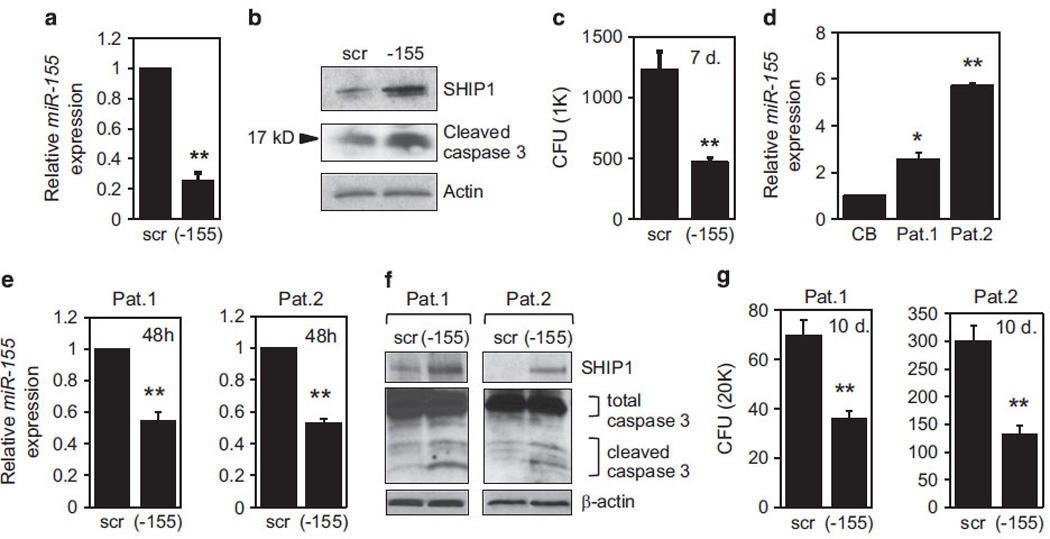Figure 1.

Antileukemic effects of miR-155 inhibition. (a) Nanoparticles loaded with scramble oligo (scr), or antagomiR-155 (-155), were delivered to MV4-11 cells and mature miR-155 expression was determined 48 h later by TaqMan assay. The expression in scramble control was set to 1. (b) Nanoparticle-treated MV4-11 cells were analyzed by western blot for SHIP1 (top) and cleaved caspase-3 levels (middle). The same blot was stained with anti-actin antibody for loading control (bottom). (c) MV4-11 cells were treated with nanoparticles, 1000 cells were plated in methycellulose and colonies (CFU) were counted 7 days later. (d) TaqMan assay of miR-155 expression in CD34+/CD38+ cells purified from two AML patient samples (Pat. 1 and Pat. 2) compared with CD34+/CD38+ cells from normal cord blood (CB), which was set to 1. (e) AML patient blasts were treated with scramble oligo (scr) or antagomiR-155 (-155) loaded nanoparticles and mature miR-155 expression was measured 48 h later by TaqMan. Scramble controls were set to 1. (f) Whole-cell extracts from AML blasts treated with nanoparticles for 48 h were analyzed for the expression of SHIP1 (top) and the presence of cleaved caspase-3 (middle). Staining for anti-actin (bottom) served as a loading control. (g) Following nanoparticle treatment, primary AML cells were analyzed for clonogenic activity by plating 20 000 cells in methylcellulose. Colonies (CFU) were scored 10 days later.
